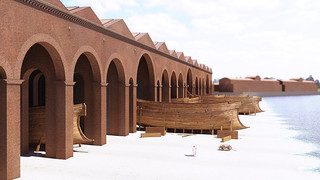
Changing direction?
I’ve been doing a lot of thinking around my participation in the Portus MOOC a few weeks back. This post is an attempt to get my thoughts in order, so I apologise in advance for any disjointedness.
First of all, let me edit in some thoughts on locatative gaming, prompted by a Guardian article on social gaming I read today while I should have been bashing this post into shape.
Continue reading →









